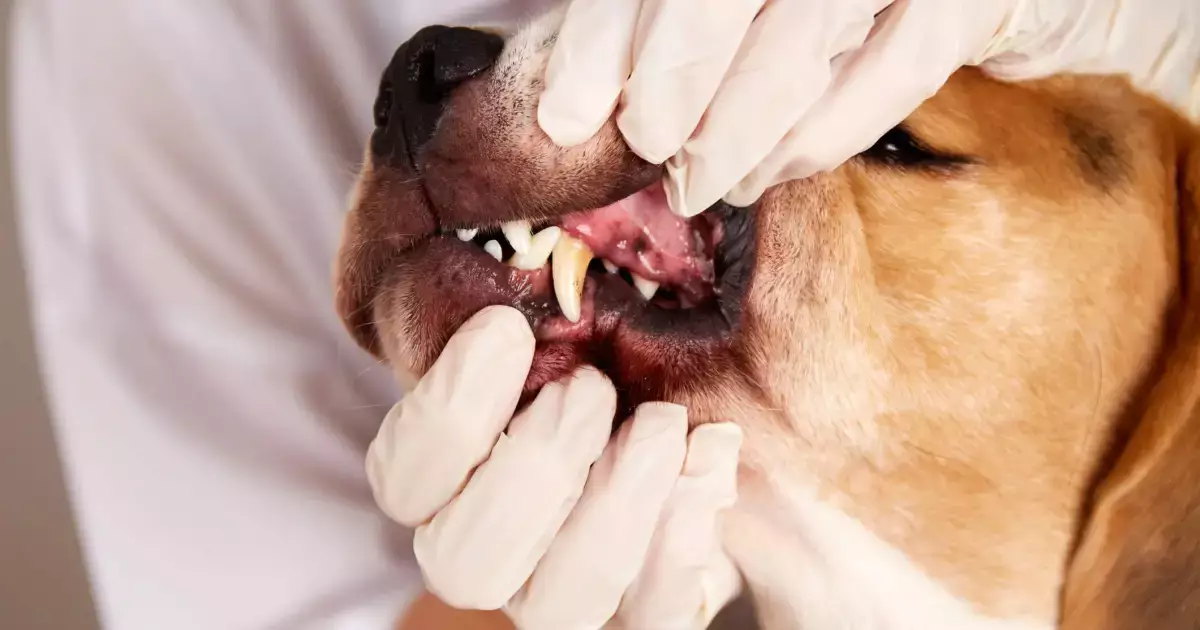Periodontal disease, commonly referred to as gum disease, is an alarming, progressive inflammatory condition that affects not just the gums but the surrounding structures of a dog’s teeth as well. This includes important components like the periodontal ligament and the underlying alveolar bone. The disease typically begins with plaque accumulation—a sticky film of bacteria that, if left unattended, can harden into tartar. Over time, this buildup leads to a series of complications, including infections, gum recession, and ultimately, tooth loss. According to the American Veterinary Dental Society, a staggering 80% of dogs older than three years are affected by varying degrees of periodontal disease, emphasizing the necessity for dog owners to be informed about its symptoms, causes, and available treatments.
Understanding the progression of periodontal disease is critical to effective prevention and treatment. The condition is categorized into four primary stages, starting with gingivitis.
– Stage 1: Gingivitis – This is where the problem begins, evident through inflamed gums that may appear red and swollen, often bleeding during normal activities like brushing or chewing. At this stage, the issue is reversible with proper dental care and attention.
– Stage 2: Early Periodontitis – As the disease advances, signs of attachment loss surface; the gums start to recede, creating pockets around the teeth. Mild bone loss may occur, and bad breath (halitosis) usually becomes noticeable.
– Stage 3: Moderate Periodontitis – The periodontal pockets become deeper, resulting in significant bone loss and substantial damage to the supporting structures. At this juncture, discomfort becomes noticeable, and teeth may begin to loosen.
– Stage 4: Advanced Periodontitis – This severe stage sees extensive bone loss, leading to deep periodontal pockets. Teeth may become extremely loose or even fall out, and the dog may suffer from severe pain and difficulty eating, along with infections that can extend to other parts of the body.
Periodontal disease can be insidious, particularly in its early stages, often presenting subtle symptoms that may not immediately draw attention. Therefore, it’s crucial for dog owners to routinely check their pets’ mouths for irregularities. Initial signs include red, swollen, or bleeding gums, noticeable bad breath, reluctance to eat, excessive drooling, and visible tartar accumulation. As the condition progresses, symptoms become more severe, potentially leading to loose or absent teeth, pus or abscesses around the teeth, receding gums, and behavioral changes indicating pain or discomfort.
The primary culprit behind periodontal disease is the accumulation of plaque and tartar. Bacteria in the mouth form biofilms on the teeth that can mineralize into tartar if not regularly cleaned. However, several risk factors can exacerbate this condition, including:
– Age: Older dogs are more susceptible due to their prolonged exposure to plaque and tartar buildup.
– Breed: Smaller breeds with overcrowded or misaligned teeth are particularly at risk.
– Diet: Diets high in soft or sticky foods greatly contribute to plaque buildup.
– Oral Hygiene: Lack of adequate dental care, including infrequent brushing or insufficient professional cleanings, can worsen the situation.
Dealing with periodontal disease requires a multi-faceted approach combining veterinary intervention and diligent at-home maintenance. Initially, a veterinarian will conduct a comprehensive examination and might utilize dental X-rays to evaluate underlying issues.
– Professional Dental Cleaning: Typically the first step, this process involves scaling to remove plaque and tartar, both above and below the gum line, often necessitating anesthesia for the dog’s comfort.
– Antibiotics and Medications: If an infection accompanies periodontal disease, antibiotics may be prescribed to combat the bacteria and reduce inflammation.
– Tooth Extraction: In serious cases where teeth are significantly damaged, extraction may be necessary to enhance the dog’s oral health and alleviate pain.
– Surgical Intervention: For advanced periodontal cases, surgical procedures may be needed to manage deep pockets or restore lost bone structure.
While periodontal disease can lead to irreversible damage, proactive measures can mitigate its impact. Prevention is often simpler and less costly than treatment. Here are some key preventive strategies:
– Regular Brushing: Aim to brush your dog’s teeth daily or at least a few times a week using a dog-specific toothbrush and toothpaste.
– Dental Chews and Toys: Provide your dog with dental chews designed to help clean teeth and massage gums, while ensuring they hold the Veterinary Oral Health Council (VOHC) seal of approval.
– Nutritional Choices: Choosing a balanced diet that promotes dental health can also prove beneficial. Some commercial dog foods are specially formulated to help reduce plaque and tartar.
– Routine Veterinary Visits: Annual dental check-ups are essential for early detection and prevention. A veterinarian can monitor your pet’s oral health and catch emerging issues before they escalate.
Although periodontal disease by itself may not be life-threatening, its implications on a dog’s health and quality of life cannot be underestimated. Untreated, it can lead to severe pain and infections that may spread to critical organs like the heart and kidneys. Therefore, awareness, preventive care, and prompt action remain integral for a happy, healthy life for your canine companion.

